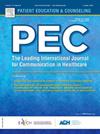Partial language concordance in primary care communication: What is lost, what is gained, and how to optimize
IF 2.9
2区 医学
Q2 PUBLIC, ENVIRONMENTAL & OCCUPATIONAL HEALTH
引用次数: 0
Abstract
Objective
In healthcare encounters, partial language concordance occurs when clinicians have some linguistic ability in the patient’s preferred non-English language or patients have some linguistic ability in English or another language (e.g., Mandarin when their preferred language is Cantonese). While the best practice is to work with qualified professional interpreters in these cases, oftentimes visits occur without qualified interpretation. This paper seeks to understand how these partially concordant visits are conducted and how they may be optimized to meet legal standards of non-discrimination.
Methods
19 partially concordant primary care visits with Chinese speaking patients were analyzed using discourse analysis.
Results
Findings illustrate expected communication challenges and unexpected benefits of partial language concordance. While partial language concordance can facilitate rapport building, vocabulary and fluency limitations can also open the door to miscommunication. We also observed how implicit and explicit request of a qualified interpreter to be on standby during the visit can be utilized by the physician to facilitate communication.
Conclusions
Communication might be optimized by the inclusion of a qualified interpreter with an explicit discussion at the beginning defining interpreter roles.
Practice Implications
Discussions with interpreters and how they can best engage throughout could retain the rapport created by a shared language, while minimizing miscommunication and errors.
求助全文
约1分钟内获得全文
求助全文
来源期刊

Patient Education and Counseling
医学-公共卫生、环境卫生与职业卫生
CiteScore
5.60
自引率
11.40%
发文量
384
审稿时长
46 days
期刊介绍:
Patient Education and Counseling is an interdisciplinary, international journal for patient education and health promotion researchers, managers and clinicians. The journal seeks to explore and elucidate the educational, counseling and communication models in health care. Its aim is to provide a forum for fundamental as well as applied research, and to promote the study of organizational issues involved with the delivery of patient education, counseling, health promotion services and training models in improving communication between providers and patients.
 求助内容:
求助内容: 应助结果提醒方式:
应助结果提醒方式:


